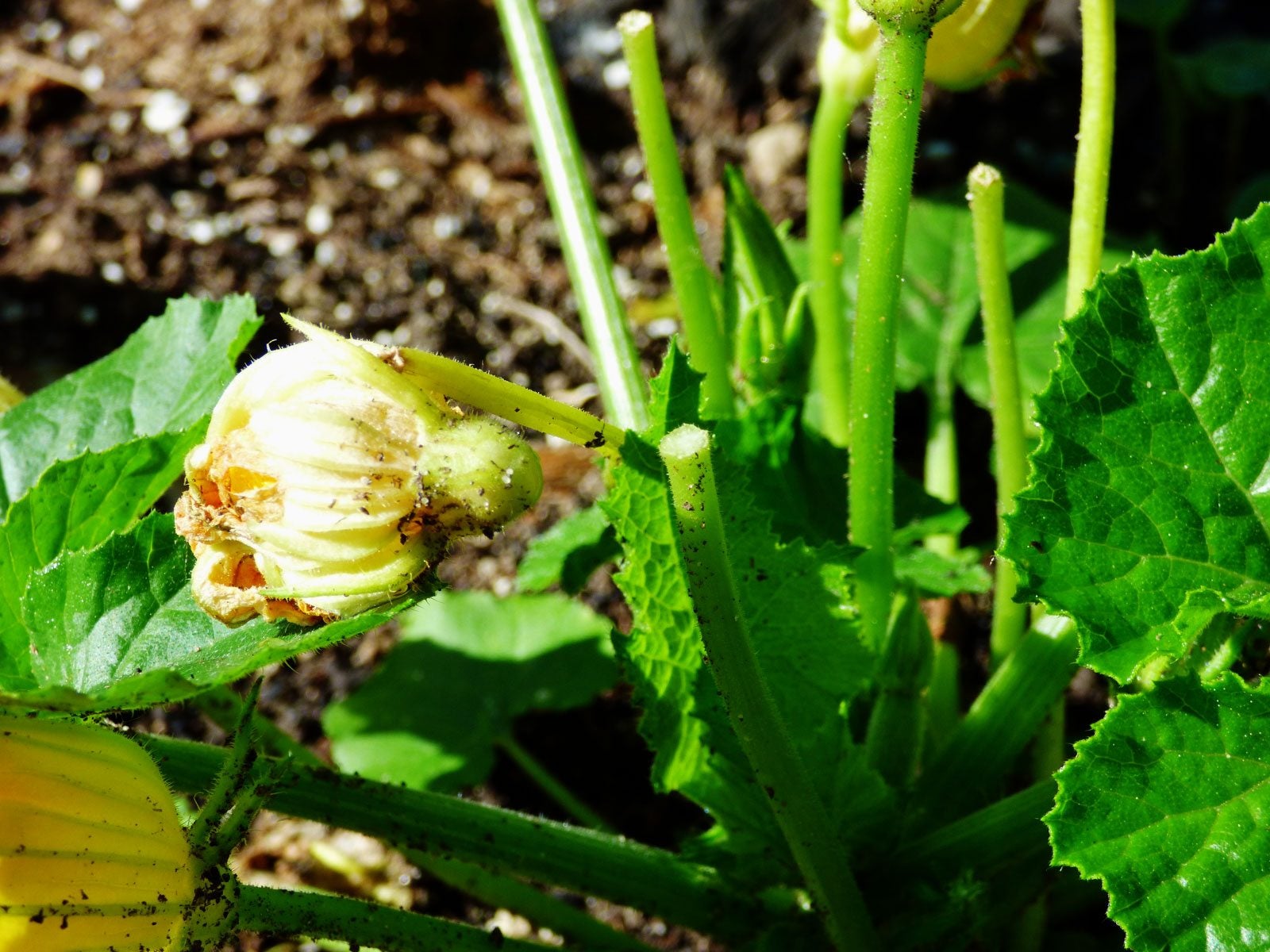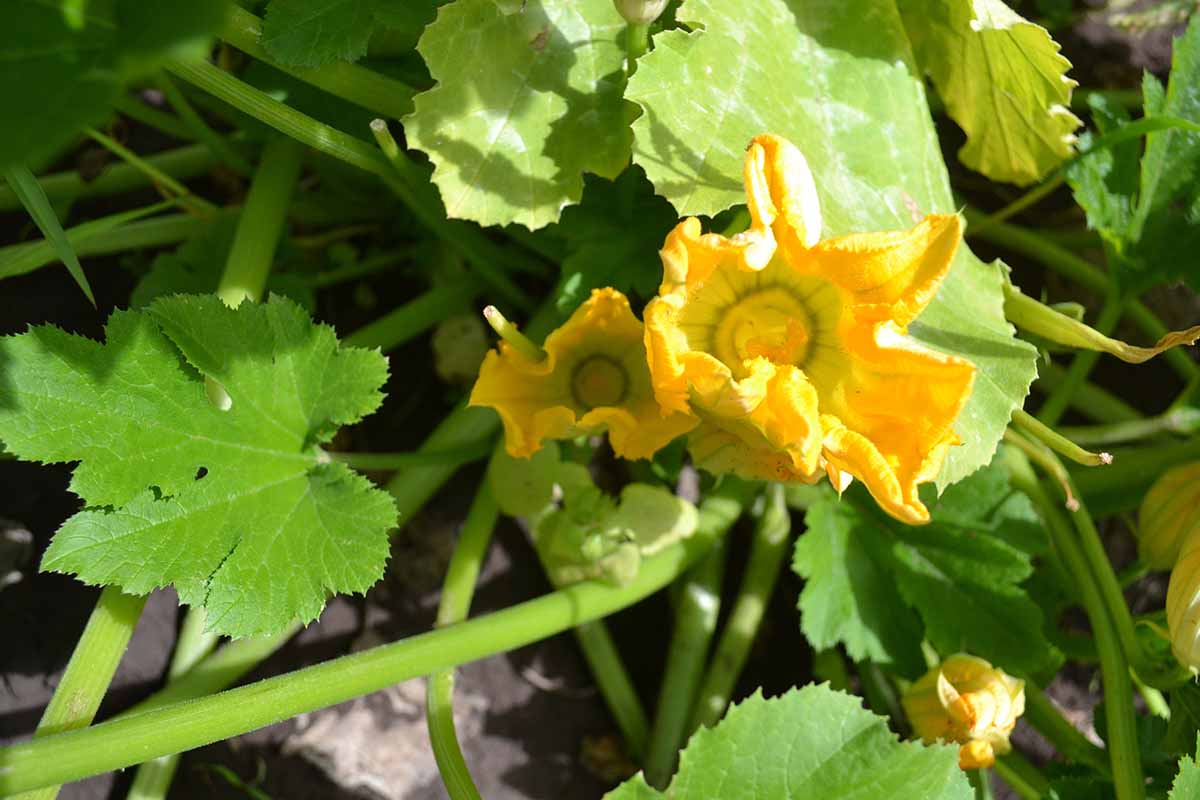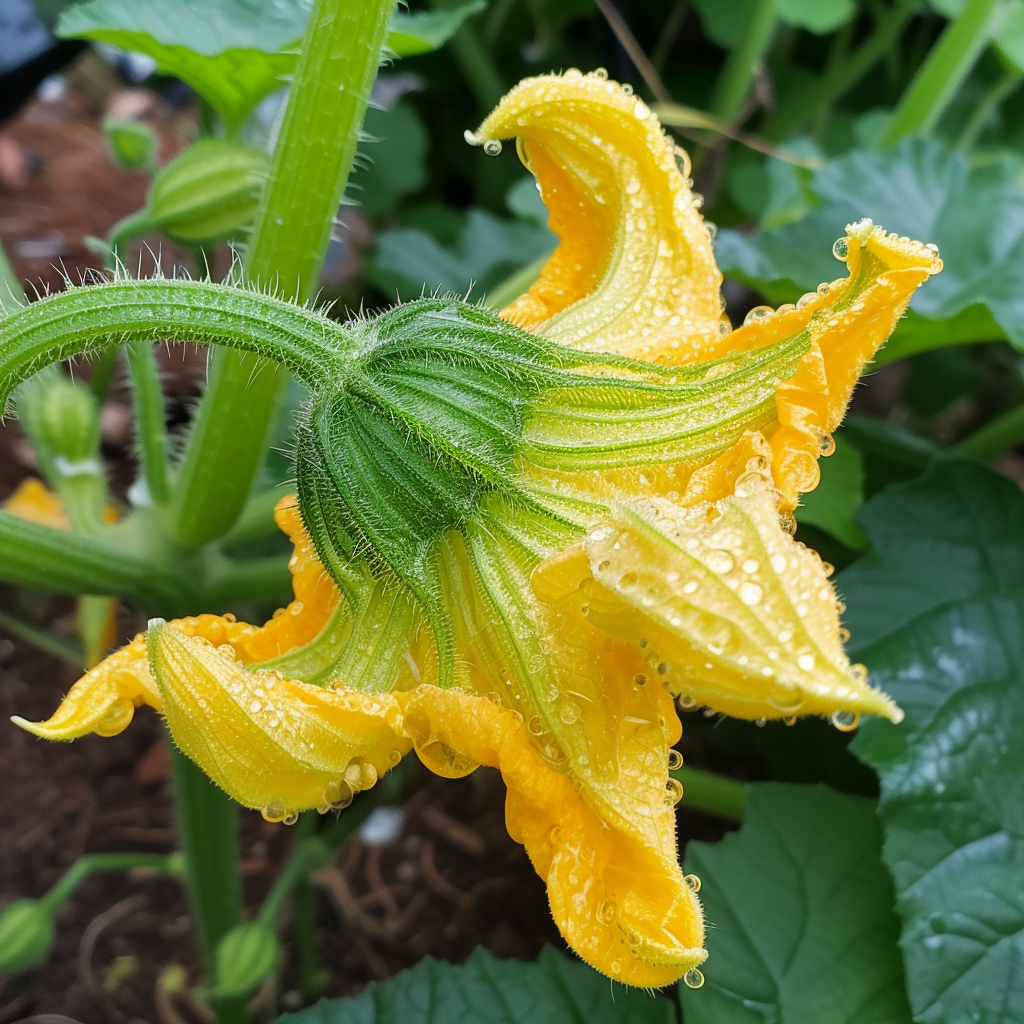Have you ever wondered why are the flowers on my zucchini plants falling off? It can be quite disheartening to watch those potential zucchinis disappear before your eyes. Well, fear not! In this article, we will explore the possible reasons behind this perplexing phenomenon and provide you with some helpful tips to prevent it from happening in the future. So, grab your gardening gloves and let’s dig into the mystery of the vanishing zucchini flowers!
Possible Causes of Flower Drop on Zucchini Plants
If you’ve been noticing the disheartening sight of flowers falling off your zucchini plants, you may be wondering what could be causing this issue. Fortunately, there are several possible causes that you can explore and address to ensure the health and productivity of your plants. Let’s delve into each potential cause and learn more about how to tackle them.
Insufficient Pollination
One of the primary reasons for flower drop on zucchini plants is insufficient pollination. Zucchinis, like many other plants, rely on pollinators to transfer pollen from the male flowers to the female flowers, which then develop into fruit. However, if there are not enough pollinators present or if the flower structure hinders effective pollination, you may experience flower drop.
Lack of pollinators
A lack of pollinators, such as bees, butterflies, and other insects, can significantly impact the pollination process. These creatures play a crucial role in transferring the pollen between flowers, and without them, your zucchini plants may struggle to produce fruit. Consider creating an inviting environment for pollinators by planting flowers that attract them or by introducing bee houses or butterfly feeders to your garden.
Flower structure hindering pollination
Sometimes, the structure of the zucchini flowers themselves can impede proper pollination. Zucchini plants produce separate male and female flowers, and they rely on insects or the wind to carry the pollen between them. If the male and female flowers are not aligned correctly, which can happen due to certain genetic or environmental factors, successful pollination may be hindered, resulting in flower drop.

Environmental Factors
Environmental factors can also contribute to flower drop on zucchini plants. Considering the impact that weather conditions, humidity levels, and sunlight can have on plant health is essential in identifying the cause of flower drop.
Extreme temperatures
Zucchini plants prefer moderately warm temperatures between 70 to 85 degrees Fahrenheit (21 to 29 degrees Celsius). If the temperatures consistently rise above this range, especially for an extended period, the stress on the plants may lead to flower drop. Similarly, sudden heatwaves can also shock the plants and cause their flowers to fall off prematurely.
Excessive humidity
While zucchinis thrive in relatively humid conditions, excessive humidity can actually have a negative impact on flower development. It can lead to issues like poor air circulation, which can facilitate the growth of fungal diseases, and it can also interfere with successful pollination and result in flower drop. Proper ventilation and ensuring that the zucchini plants have enough space between them can help mitigate the effects of excessive humidity.
Drought or water stress
On the other end of the spectrum, drought or water stress can also cause flowers to drop from zucchini plants. Insufficient watering can lead to stress, wilting, and ultimately, the shedding of flowers. To ensure healthy growth and prevent flower drop, it’s crucial to keep a balance in watering by consistently providing adequate moisture to the plants.
Too much shade
Zucchini plants thrive in full sun, requiring a minimum of six to eight hours of direct sunlight per day. Insufficient sunlight due to excessive shading from surrounding plants or structures can impact their overall health and lead to flower drop. Make sure to plant your zucchinis in a location where they receive ample sunlight throughout the day.
Pest Infestation
Pests can wreak havoc on your zucchini plants, leading to various problems, including flower drop. Identifying and addressing these pest infestations promptly can make a significant difference in preventing further damage.
Aphids
Aphids are tiny, sap-sucking insects that can colonize on the leaves and stems of zucchini plants. They feed on the plant’s sap and excrete a sticky substance called honeydew, which can attract ants and promote the growth of mold or fungus. Severe aphid infestations can weaken the plants and cause their flowers to drop. Regularly inspect your zucchini plants for signs of aphids and use appropriate methods to control their populations.
Squash bugs
Squash bugs are another common pest that affects zucchini plants. These flat, brownish insects feed on the sap from leaves and stems, leading to wilting and the eventual dropping of flowers. You may notice the presence of eggs or small nymphs on the undersides of leaves. Vigilance and employing integrated pest management strategies, such as handpicking and natural insecticides, can help prevent significant damage to your zucchinis.
Cucumber beetles
Cucumber beetles are notorious pests that not only feed on zucchini plants but also transmit bacterial wilt disease. Their feeding can cause flowers to drop prematurely, hindering fruit production. Look out for their yellow or green bodies with black stripes or spots. Using floating row covers or employing insecticides specifically designed for cucumber beetles can help control their populations and protect your zucchini plants.

Disease or Fungal Infection
Diseases and fungal infections can also be responsible for flower drop on zucchini plants. Recognizing the symptoms and taking appropriate measures to prevent or treat these issues can help keep your plants healthy and productive.
Powdery mildew
Powdery mildew is a common fungal disease that affects zucchini plants and can lead to flower drop. Its presence is characterized by grayish-white powdery spots on the leaves, stems, and flowers. Poor air circulation, high humidity, and warm temperatures favor the development of this disease. To prevent powdery mildew, provide adequate spacing between plants, maintain good ventilation, and consider applying organic fungicides when necessary.
Blossom end rot
Blossom end rot is a physiological disorder caused by calcium deficiency. Initially, it appears as sunken, discolored spots on the blossom end of young zucchini fruit. If left untreated, it can progress, leading to fruit rot and flower drop. Consistently watering your plants and ensuring a steady supply of calcium through well-balanced soil or foliar sprays can help prevent blossom end rot and promote healthy fruit development.
Downy mildew
Downy mildew is another fungal disease that can affect zucchini plants, primarily during cool and humid conditions. It presents as yellowish spots on the upper leaf surfaces and purplish-gray mold on the undersides. Infected plants may experience defoliation and an increased likelihood of flower drop. Employing cultural practices such as avoiding overhead watering, providing adequate spacing, and applying fungicides can help control downy mildew.
Inadequate Watering
Water plays a crucial role in the overall health and development of zucchini plants, including flower production. Both underwatering and overwatering can lead to flower drop.
Underwatering
Insufficient watering can result in water stress, causing the plant to prioritize its survival over producing fruit. In response, the plant may drop flowers to conserve energy and resources. Regularly monitor the soil moisture, especially during hot and dry periods, and aim to provide consistent and adequate hydration to your zucchini plants.
Overwatering
While zucchinis require consistent moisture, overwatering can hinder their ability to absorb oxygen and create an environment conducive to root rot and other diseases. Overwatering can lead to stress and weakening of the plant, resulting in flower drop. Maintain a balanced watering regimen by allowing the top inch of soil to dry out before watering again. Installing proper drainage systems can also help prevent overwatering-related issues.

Stress from Temperature Fluctuations
Zucchini plants can be sensitive to temperature fluctuations, which can stress them and contribute to flower drop.
Extreme heat
Exposure to extreme heat can cause stress and wilting in zucchini plants, and their flowers may drop prematurely as a result. Providing shade covers during scorching periods or planting zucchinis in areas with afternoon shade can help protect them from excessive heat and minimize flower drop.
Cold snaps
Sudden drops in temperature, especially below the recommended range for zucchini plants, can also cause stress and flower drop. If your area experiences unexpected cold snaps, covering the plants with frost blankets or bringing potted zucchinis indoors temporarily can help mitigate the effects of cold temperatures.
Nutrient Deficiencies
Proper nutrition is essential for the healthy growth and development of zucchini plants. Any nutrient deficiencies can impact flower production and increase the likelihood of flower drop.
Nitrogen deficiency
Nitrogen is an essential nutrient for plant growth and chlorophyll production. A deficiency in nitrogen can result in weak and yellowing leaves, limited flower production, and flower drop. Incorporating organic matter into the soil, using compost teas or organic nitrogen-rich fertilizers, can help address nitrogen deficiencies and promote healthy flower development.
Potassium deficiency
Potassium plays a vital role in overall plant health, including flower development. A lack of potassium can lead to reduced flower production and increased flower drop. Using potassium-rich fertilizers or incorporating organic sources of potassium, such as wood ash or banana peels, into the soil can help prevent deficiencies and encourage optimal flower formation.
Phosphorus deficiency
Phosphorus deficiency can also impact flower production in zucchini plants, leading to lower fruit set and an increased likelihood of flower drop. Symptoms include purplish discoloration on leaves and stunted growth. Adding phosphorus-rich fertilizers or incorporating organic sources like bone meal or rock phosphate into the soil can rectify phosphorus deficiencies and support healthy flower development.
Overcrowding
Crowded planting conditions can impede air circulation and sunlight penetration, leading to poor flower development and increased flower drop.
Lack of air circulation
Insufficient air circulation due to overcrowding can create a conducive environment for diseases and pests, causing stress to zucchini plants and increasing flower drop. Providing adequate spacing between plants and pruning excess foliage can promote better air movement and reduce the risk of overcrowding-related issues.
Competition for sunlight and resources
When zucchini plants are overcrowded, their access to sunlight and essential resources like water and nutrients becomes limited. This competition can result in weakened plants, inadequate flower formation, and flower drop. Ensuring sufficient spacing between plants when initially planting and thinning out any overcrowded areas can help optimize resource allocation and reduce flower drop.
Improper Pruning Techniques
Pruning can be beneficial for zucchini plants, promoting better airflow and directing energy towards fruit production. However, improper pruning techniques can have adverse effects and contribute to flower drop.
Removal of female flowers
It’s important to avoid removing female flowers while pruning zucchini plants since they are responsible for the production of fruit. Loss of female flowers can greatly hinder fruit development and ultimately lead to flower drop. When pruning, focus on removing excess foliage and dead or diseased plant parts, while leaving the female flowers intact.
Excessive pruning of the plant
Excessively pruning zucchini plants can disrupt their natural growth patterns and cause stress, which can manifest as flower drop. Avoid aggressive pruning that removes a significant portion of the plant. Instead, focus on light pruning to maintain proper airflow and control plant size.
By understanding the various causes of flower drop on zucchini plants and implementing the appropriate solutions, you can help ensure healthy and productive plants. Remember to address pollination issues, consider environmental factors, manage pests and diseases, provide adequate watering, prevent stress from temperature fluctuations, address nutrient deficiencies, optimize spacing, and practice proper pruning techniques. With your care and attention, your zucchini plants will be flourishing, and you’ll soon be enjoying a bountiful harvest of delicious zucchinis. Happy gardening!



